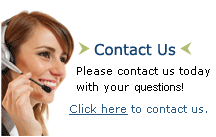How to Write a Media Release
By Sue Currie (c) 2007
Did you know that publicity is supposedly seven times more effective than advertising? And it is free – that is if you do it yourself. If you know the elements of writing a good media release to capture the attention of journalists, you can benefit from free editorial coverage. Here's a few tips to help you write a media release.
The Beginning
The first and most important thing is to have something interesting to say. Consider your USP – just like in sales. It's your unique selling proposition. After all publicity is "selling". You are selling a story idea to the media. I like to call it the unique shining point. It really needs to stand out, shine, be compelling – not an advertisement, not a boring product plug.
Another element that will really hook the journalist in is to consider the ESP the emotional selling point. Often it is the human element in the story that will capture the reader's attention therefore the attention of the media. Think about what your story is. What is your background? Have you overcome any obstacles to get where you are today? Any achievements or milestones? Where is the human interest?
What's more compelling? An announcement about a wedding limousine service, or the 30th anniversary both in marriage and business of the couple who run the service? This is a story I helped someone uncover in a seminar I conducted. The couple later went on to get a full page colour photo and editorial story in a wedding supplement in their local paper – for free, just by working out the human element of interest to readers.
WIFM
What's in it for me? Or what is in it for them. How does your product or service help others? Your media release needs to state that key element. How will the reader benefit?
It's uninteresting to just say, "Jones & Smith Accountants today announced the launch of their revolutionary new accountancy software package... Better to state – small businesses now have a better way to measure, monitor and manage the costs involved in running their business, thanks to Jones & Smith's new online measurement & analysis accounting system.
The Heading
Write a catchy headline with a short, punchy phrase. Observe how headings are written in newspapers and magazines. You need to grab the reader's attention. Of course that is if you are planning to post your media release snail mail with your product sample or full media kit. But most releases these days are emailed. However, the same principles apply. Use a compelling subject heading or the journalist will simply hit delete. Make it provocative.
The Content
Have a bright opening; start with your strongest point first. Instead of the conventional "today announced that" lead, you should make your release stand out from the crowd with a strong, compelling lead paragraph. Since editors and journalists get so many releases every day, you only have seconds to grab their attention. The first paragraph is where your important information goes, but it needs to be written in an exciting, creative, interesting way.
Consider the 5 W's – Who, What, When, Where, Why; This is an easy formula to remember when writing your release but it is still not enough without some "zing" or compelling elements to "hook" the reader in.
Again - how does it help? Remember the benefit to the reader and perhaps include some "how to" tips on whatever your product or service is.
Use memorable quotes; either of you or someone well-known who can endorse your product. Quotes are often used by the media as they make the story more "real" or personal. A good quote can include why you've started this business or developed your product or how it helps your target audience.
The Format
Title it "Media Release" and always include the date. Include your contact details of telephone, mobile, email and website address. Use letterhead and keep the content to one page – any more and you will löse the journalists' attention. When using email, cut and paste into the body of the email – don't send an attachment.
The Contact
Send your release to the appropriate person – be sure to do your research. Chëck that the "food editor" is still just that and not now the "finance editor". Find out the name of the person and their direct email.
Always follow up with a telephone call or email and keep your media liaison consistent. If you provide good information you are not a nuisance, you are providing a service. Journalists and editors need our information to fill their newspapers, magazines and radio shows.
Supply a creative photo or suggest a photo opportuníty that will add to the impact of having your information publicised.
Gaining publicity in the media will help you become known as an expert in your business field; it will enhance your image and reputation and help you to grow your business.
About The Author
Sue Currie, the director of Shine Communications Consultancy and author of Apprentice to Business Ace – your inside-out guide to personal branding, is a business educator and speaker on personal branding through image and media. Sign up for free monthly tips on personal and professional PR at ShineComms.com.au and learn more about how you can achieve recognition, enhance your image and shine.
 Archives
Archives
Click here for reprints and timely articles on search engines; optimization, marketing and advertising ideas.
Select by Topic 
Search Engine Submission : Reporting (Benchmark) : Pricing : SEO/SEM Research Archives : Search Engine Definitions
Web Designers Glossary : Internet Definitions : Business Development Checklist : Internet Marketing
![]()

